It’s easy to see why the common name for the dramatic Brugmansia is angel’s trumpet. These sub-tropical beauties offer months of flowers and fragrance, all in an easy-care package.
Few plants have flowers as impressive and numerous as the brugmansia. Each trumpet-shaped bloom is up to 20cms long, all borne in massive flushes often every 6-8 weeks, set off by rain. In the peak of summer my own specimen can carry up to 500 blooms at one time.
It’s a spectacular sight, usually accompanied by the noisy hum of a million bees. As a bonus most brugmansias are sweetly scented, especially in the early
morning and in the evening. Can you imagine the perfume of those hundreds of flowers at dusk? Then after a brief rest, the plant surges into another
growth spurt producing another enormous flush of flowers. This pattern is repeated all through summer and autumn. As the weather cools the flushes
are less regular.
A lively combo - golden yellow trumpets against magenta bougainvillea. Photo - Alistair Hey
Until recently few hybrids of this unique flower have been available. But due to the interest from some passionate collectors and hybridisers flamboyant
and colourful varieties are now being released to home gardeners. We checked in with one of these growers, Alistair Hay from Meroo Meadow Perennials,
to get the best tips on these gorgeous plants.
Position: Morning sunshine is perfect for good growth and flowering. Protection from strong afternoon sunshine and wind prevents heat
stress and wilting of the flowers and foliage.
Care: Alistair says not to worry if your plant wilts in the afternoon, it will recover next morning. Not giving extra water when the plant
wilts encourages deeper rooted and more self-sufficient plants. Contrary to its tender looks, brugmansia is quite tough. If your plant does need water,
drench it deeply and infrequently.
Alistair feeds his brugmansia each winter with a blend of 50 per cent compost, 25 per cent cow manure and 25 per cent turkey manure. If he has time a repeat
application is made in autumn. He says the main pest of brugmansia is two-spotted mite. He releases predatory mites into the garden to control the
pest mite.
Brugmansias can be pruned as standards to accentuate their long trumpet flowers. If your plant has grown too big you can prune them when they finish flowering.
We don’t prune ours much except to train the growth into one stem, removing any side growths at the base.
In pots: If you grow them in pots, you need to repot every year because they grow so vigorously. You can treat them as annuals because
they strike readily from cuttings.
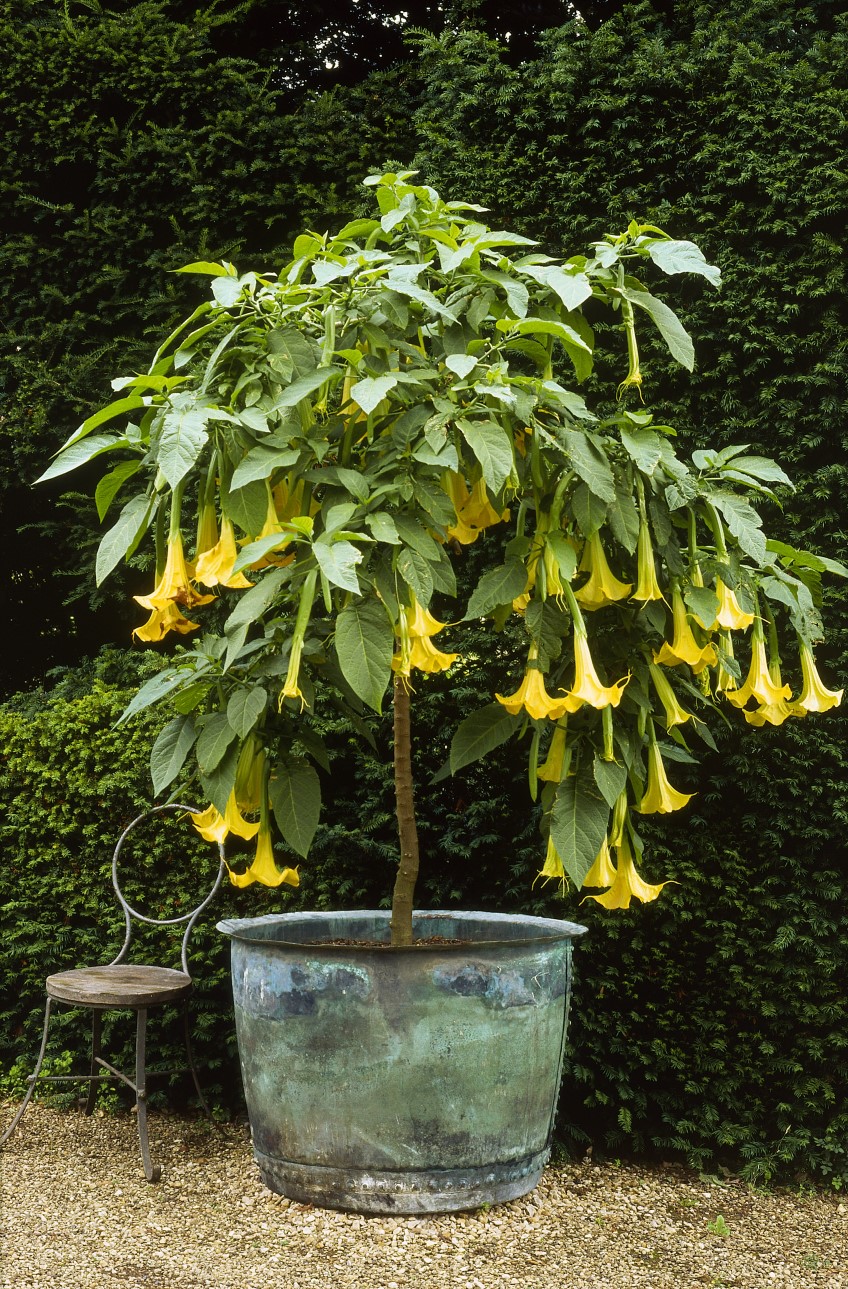
Angel's Trumpet grow in pots, just keep removing any lower growth. Photo - Gettyimages.com
Classic Companions: Summer flowering shrubs and trees
- Frangipani is a perfect summer flowering partner for brugmansia. The pendulous trumpets of the brugmansia beautifully offset its simple flowers.
- The pretty lantern-like flowers of abutilon (Chinese Lantern) also complement brugmansia. Choose from lemon-yellow, orange, pink, cherry red or
white varieties, depending on the colour of your brugmansia. Dwarf varieties of abutilon made a fine under-storey because of their compact growth habit
and soft maple-like foliage. They enjoy the shade offered by the brugmansia.
- At ground level try various exciting forms of bromeliads. Neoregelia has a classic rosette shape with many hybrids having lovely coloured and patterned
foliage. Vriesia bromeliads are all-time favourites with many colour forms, some with banded patterns on the foliage. Species of tillandsia love to
cling to rough trunks and branches. Silver-leafed T. ionantha will grow in a clumping fashion on the trunks and branches of your brugmansia.
Remember: all parts of this plant are toxic. Don’t eat any part of it, or burn any part of it.
Top Tips
1. Manure manure manure! Brugmansias are almost impossible to overfeed, and the more you put in the more you get out of the plants. Any kind of manure
can be used, but if you choose poultry pellets balance them by adding some garden compost as well.
2. If possible protect from hot dry wind. The leaves, flower buds and the flowers themselves are quite easily fried.
3. Don't prune the plants unless there is some obvious need or you are training them to shape, and then don't prune below where upright stems first fork
otherwise you will delay flowering.
Plant notes: favourite brugmansias
Brugmansia 'Clementine'
Apparently the first coloured, double brugmansia to be released in Australia, though there are more than 250 double-flowered varieties in Europe and North
America. ‘Clementine’ has a delicious smell of orange and marzipan.
Special comments: Yellow and orange flowered angel’s trumpets are usually more strongly coloured in cooler weather.
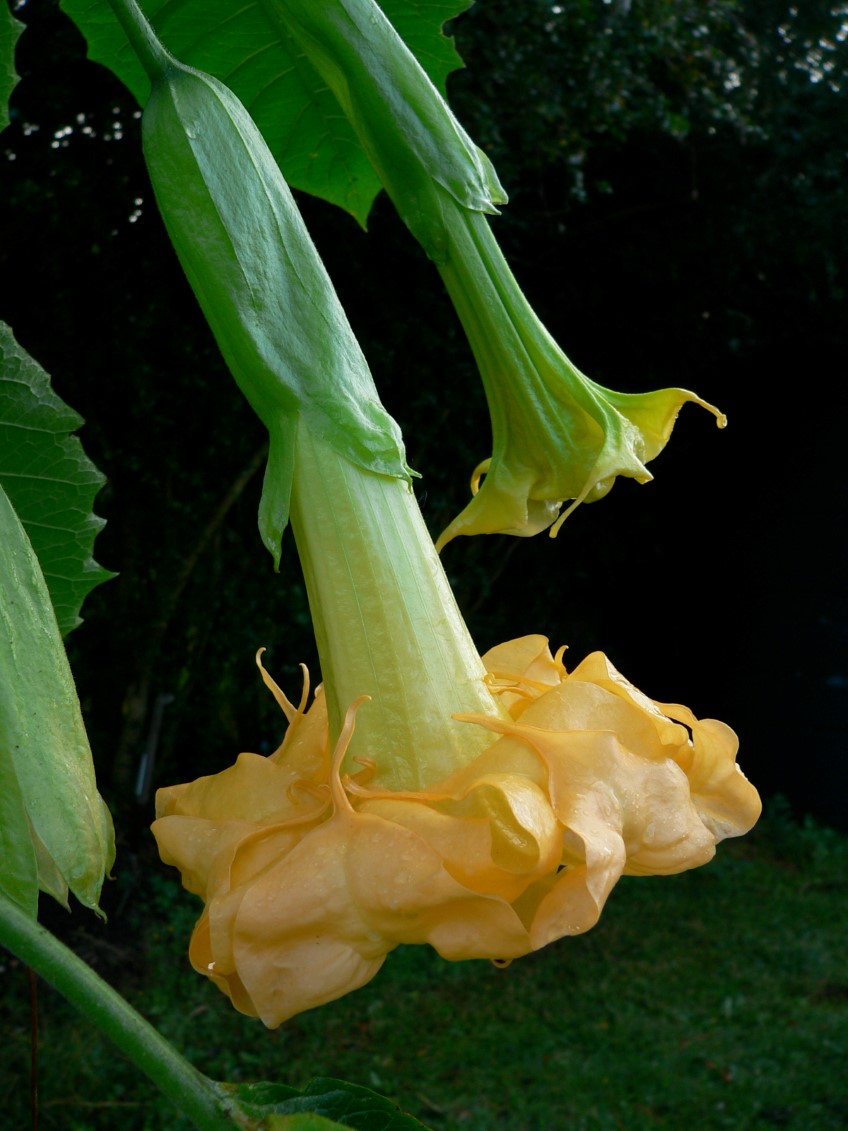
'Clementine'. Photo - Alistair Hay.
Brugmansia ‘Lipstick’
One of the best of the pendant, pink-flowered angel’s trumpets currently available in Australia. Earlier varieties had weak-textured flowers which wilted
easily, but ‘Lipstick’ holds its form very well in hot weather. Like many pinks, it opens white first.
Special comments: pink brugmansias are generally more strongly coloured in warmer weather. The more you feed the better the colouring.
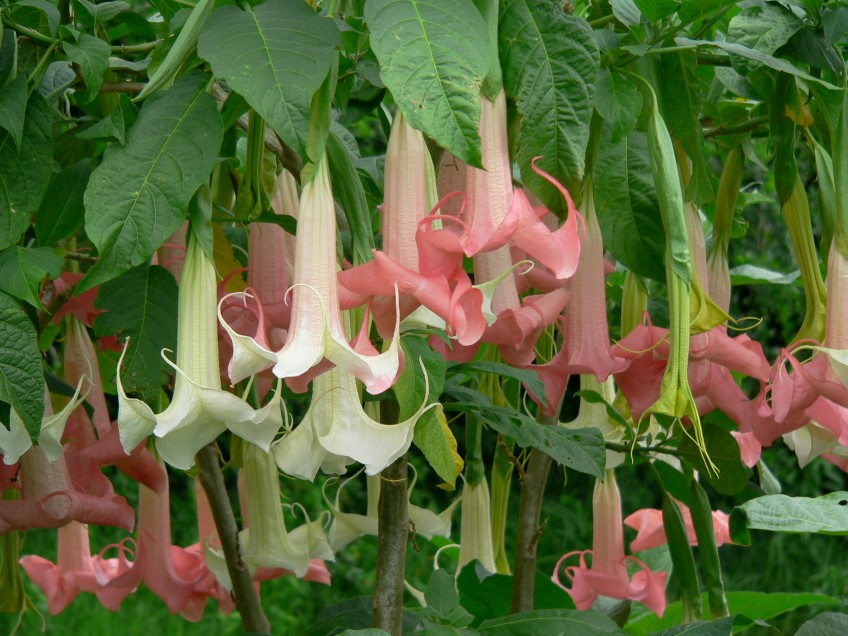
'Lipstick'. Photo - Alistair Hay.
Brugmansia ‘Butter Bomb’
Flouncy, nodding flowers almost a foot across are produced in staggering profusion. Butter yellow in warmer weather, they a suffused gold in autumn. Brugmansia
aurea (one parent of Butter Bomb) gives it superb, deep-green, quilted foliage, and it is a fine looking plant even when not in flower. The width of
the flowers comes from its B. suaveolens heritage.
Special comments: Encourage the roots to grow deep into the soil with infrequent deep watering.
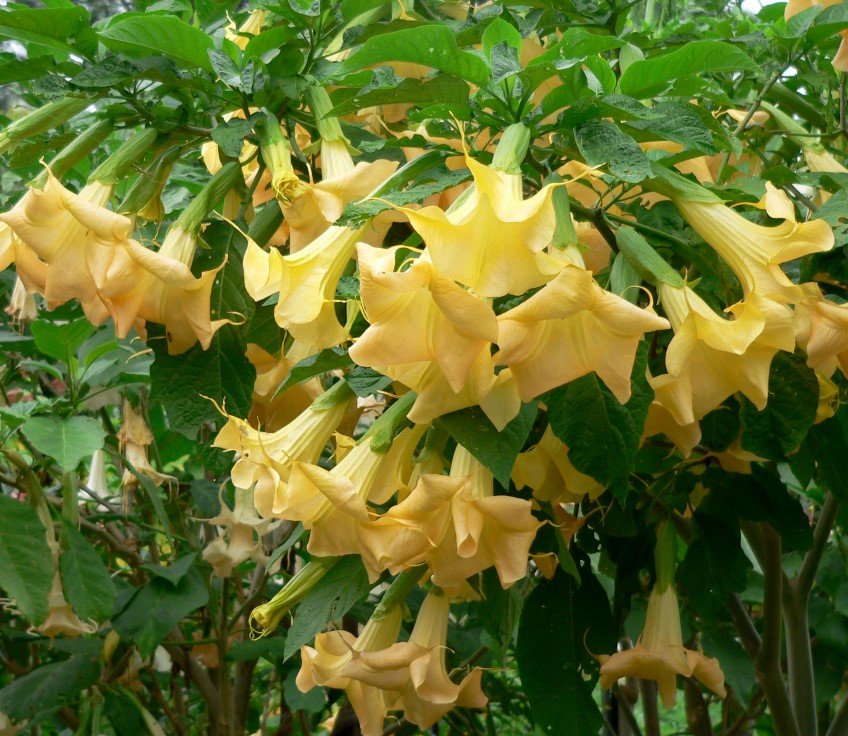
'Butter Bomb'. Photo - Alistair Hay.
Brugmansia ‘Sea Nymph’
This a new hybrid has double cream flowers which gradually become suffused with pale apricot. It has a robust habit, dark quilted leaves and relatively
small nodding flowers with long tendrils.
Special comments: Don’t prune unless you are training to umbrella shape, as hard pruning will delay flowering.
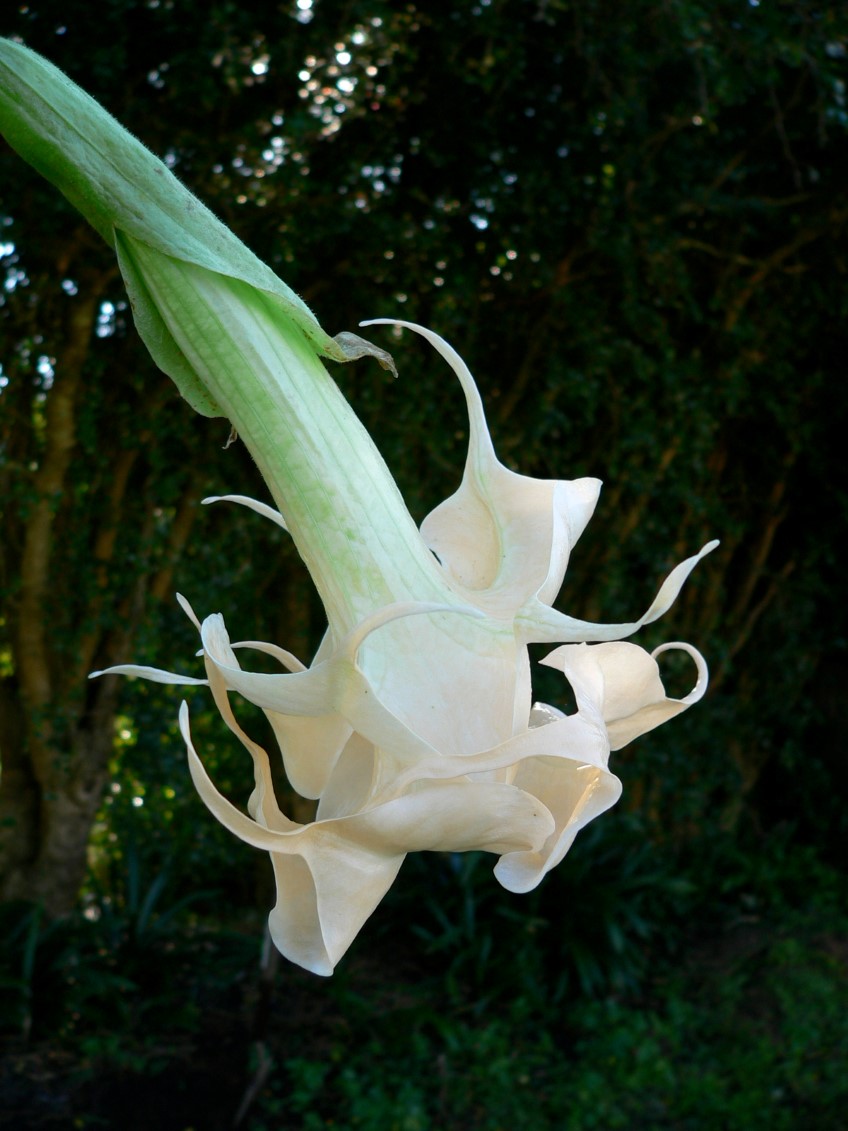 'Sea Nymph'. Photo - Alistair Hay.
'Sea Nymph'. Photo - Alistair Hay.
Brugmansia ‘Urchin Pink’
A new, small-flowered (only about 23cm long!) hybrid that grows to 3m with characteristic spreading branches from which the flowers hang very prettily.
Special comments: This variety is good for a container because of its pretty, branching habit. It’s a favourite of Alistair Hay.
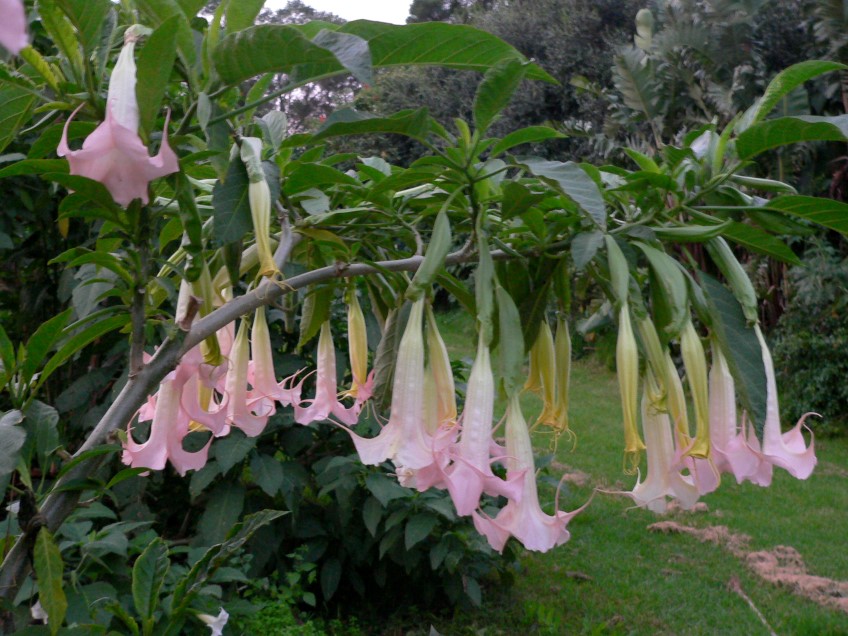
'Urchin Pink'. Photo - Alistair Hay.
Brugmansia ‘Signal’
This is a cultivar of Brugmansia sanguinea, a scentless, humming-bird pollinated species from high in the Andes. It’s a pure yellow form.
Special comments: B. sanguinea is very heat sensitive but can be successfully grown and flowered in cooler seasons in SA, Vic, Tas and S. NSW.
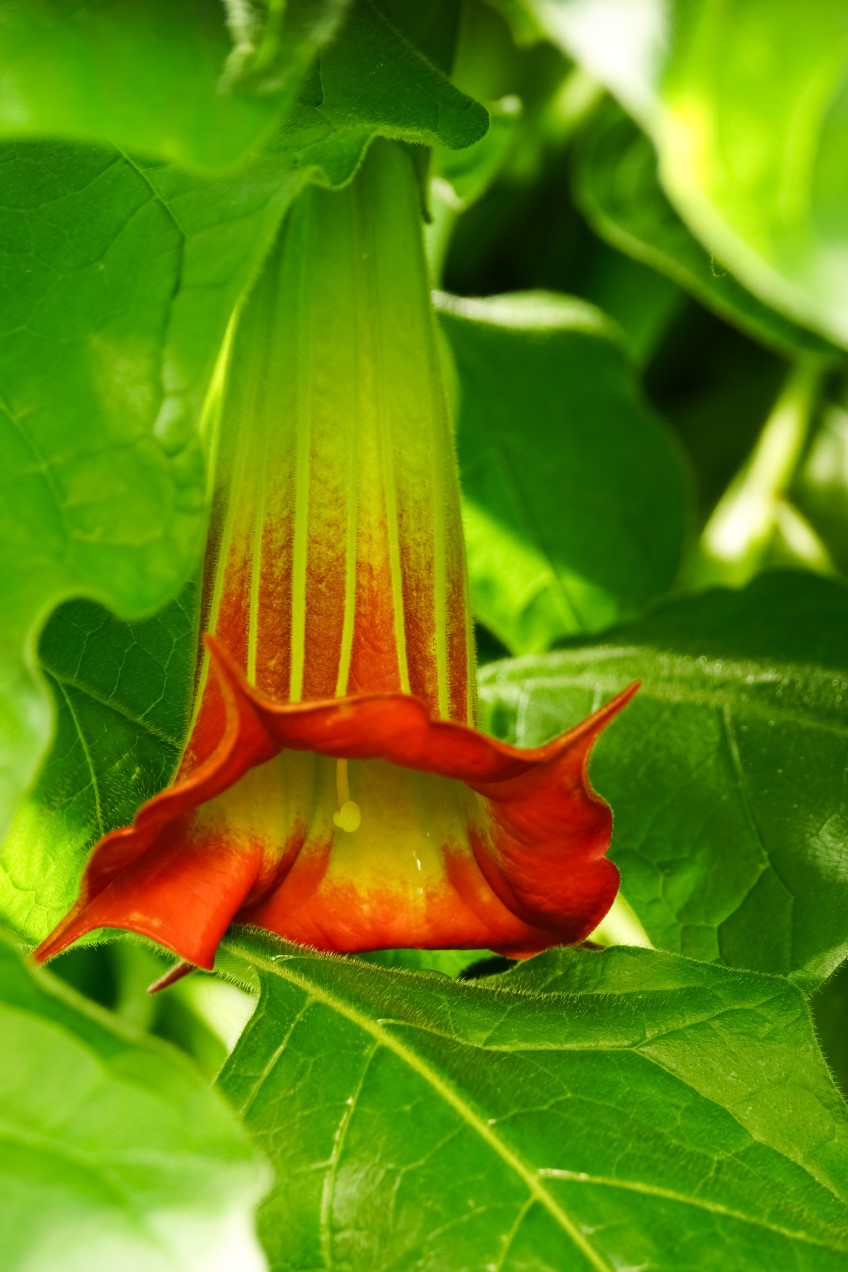
Brugmansia sanguinea Photo - Roger Hall/Shutterstock.com
Text: Sandra Ross